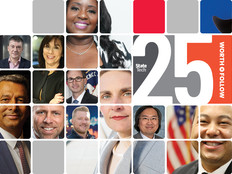Connecting the Digital Customer Experience
New technologies have the power to curate personalized journeys for constituents, using data to improve the customer experience. Personalized journeys can make all the difference in creating a positive experience for constituents and employees alike and help provide the exact services constituents need. Similar to the “recommended for you” section on websites you might often browse, personalized journeys can get the right services to the right people faster.
Right now only 16 percent of constituents believe that the “government has successfully used technology to improve customer experience,” according to a Salesforce survey. Despite relatively low satisfaction with the way government has used technology, 54 percent of consumers now say it’s easier to get help from the government online than in person.
And even as in-person engagements return, constituents remain decidedly digital-first for more frequent, low-touch interactions with government, such as submitting tax information.
By implementing interconnected systems such as customer data platforms that can pull together a comprehensive profile of a particular individual, state and local governments can deliver more informed assistance that improves customer satisfaction with digital government services.
CDPs incorporate data from a variety of sources, creating a 360-degree view of a customer, enabling better, more informed service delivery. Eliminating the need for constituents to fill out all their information each time they submit an application is one example of using customer data platforms to enhance the digital government experience.
EXPLORE: How predictive network analytics can keep government agencies one step ahead.
Enhancing Employee Capabilities Through Customer Data
Despite this potential weaving of technology into the fabric of government services, 47 percent of constituents feel that government employees lack the necessary tools to serve the public. Without employing technology to its full potential, constituents won’t experience the full value that digital government can bring.
Imagine CDP technology as a superpower, giving employees an extra edge with service delivery. In state and local government, CDPs can help employees give constituents personalized experiences by collecting, unifying and activating data to draw meaningful insights and provide proactive solutions to customers.
The best part is that these capabilities come ready to go, and can be integrated with existing customer relationship management systems. With 73 percent of the public sector workforce feeling unequipped to learn the digital skills required to succeed, the implementation of low-code and prebuilt solutions is the answer the workforce has been seeking. Digital solutions put the power to solve constituents’ problems into the hands of the frontline employees who want to better serve their communities.
DIVE DEEPER: Why state and local services should consider an agile approach to digital services.
The Role of Digital Tools in Building and Maintaining Trust
As the foundation of government business, trust between constituents and government is essential to its function. But, nearly half (46 percent) of constituents report that they trust their government only a little or not at all. Investing in digital tools plays a vital role in providing great customer experiences in state and local government, which rebuilds faith in those institutions.
Providing great digital experiences to constituents has been shown to increase trust. In fact, 87 percent of customers said that a great digital customer experience would increase their degree of trust in government.
In order to build and maintain trust, state and local governments must take a new approach to digital transformation and implement technologies that will help them deliver on their mission. Customer experience tools including CDPs can connect government to customers, making it more responsive and trustworthy.
As the future of government service transitions to digital, state and local governments must digitally transform, providing constituents with the trusted experiences they’ve come to expect while enhancing employees’ ability to deliver on their mission.











